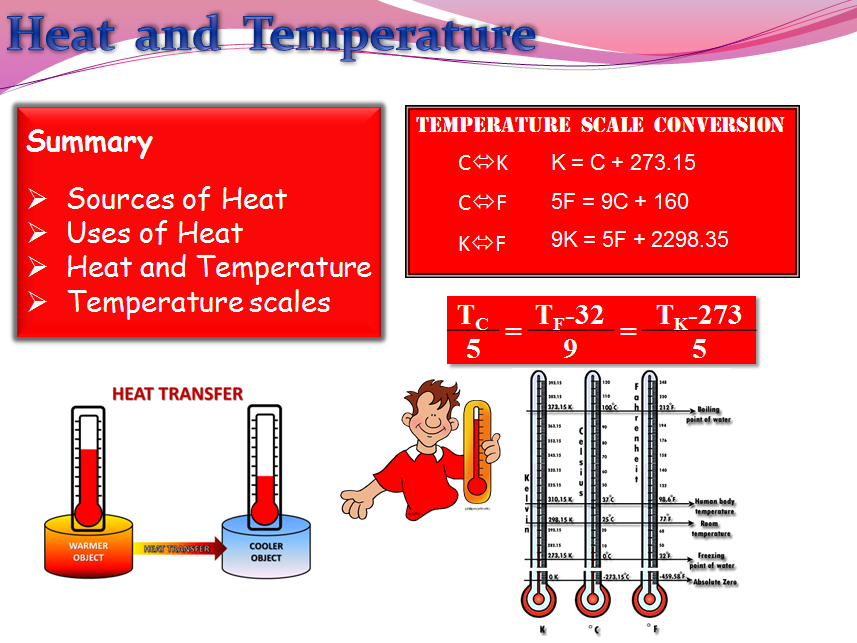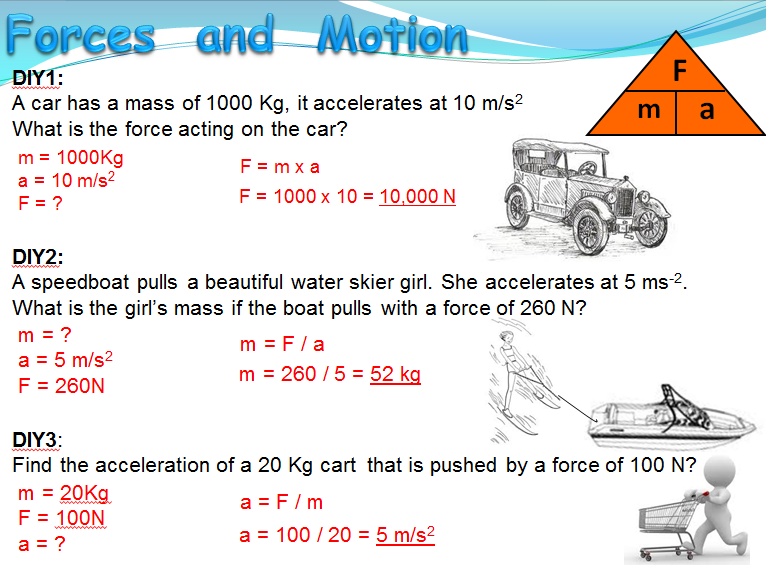
59Uploads
111k+Views
48k+Downloads
All resources

Newton's third law of motion - Action-Reaction (Physics)
This lesson is about Newton's third law of motion (Action-Reaction). A part of a science course for grade 9 (Physics). The files contain the theories, lecture and practices, as well as links to videos and online simulations. Additionally there is a PPT file for extra practice in class.
The set includes Power-Point presentation and iBook, which is an Interactive Book, where the students fill the blanks that goes in accordance with the PPT slides.
In addition there are all the answers to the iBook for the teacher.

Moment of Force (Physics)
This lesson is about Moment of forces. How to balance a lever, Calculate the moment of force and the
3 classes of levers.
A part of a science course for grade 9 (Physics). The files contain the theories, lecture and practices, as well as links to videos and online simulations. Additionally there is a PPT file for extra practice in class.
The set includes Power-Point presentation and iBook, which is an Interactive Book, where the students fill the blanks that goes in accordance with the PPT slides.
In addition there are all the answers to the iBook for the teacher.

Light and color (Physics)
This lesson is about Colors, how we see colors and the affect of light sources, light filters etc.
Absorption and reflection of colors, white light and newton's wheel. Primary and secondary colors.
A part of a science course for grade 8 (Physics - Energy). The files contain the theories, lecture and practices, as well as links to videos and online simulations. The set includes Power-Point presentation and iBook, which is an Interactive Book, where the students fill the blanks that goes in accordance with the PPT slides. In addition there are all the answers to the iBook for the teacher.

Heat and Temperature (Physics)
This lesson is about Heat and Temperature. Includes temperature scale conversions (Kelvin, Fahrenheit, Celsius). The difference between heat and temperature, thermal equilibrium, the factors affecting the amount of heat contained by an object.
A part of a science course for grade 7 (Physics - Energy). The files contain the theories, lecture and practices, as well as links to videos and online simulations. The set includes Power-Point presentation and iBook, which is an Interactive Book, where the students fill the blanks that goes in accordance with the PPT slides. In addition there are all the answers to the iBook for the teacher.

Energy Types (Physics)
his lesson is about Energy Types, stored energies (potential, chemical, nuclear) and working energies kinetic, heat, light, sound, electrical). Includes calculations and everyday example.
A part of a science course for grade 9 (Physics - Energy). The files contain the theories, lecture and practices, as well as links to videos and online simulations. The set includes Power-Point presentation and iBook, which is an Interactive Book, where the students fill the blanks that goes in accordance with the PPT slides. In addition there are all the answers to the iBook for the teacher.

Buoyancy Force (Physics)
This lesson is about Buoyancy force as related to Newton's third law of motion (action-reaction). A part of a science course for grade 9 (Physics). The files contain the theories, lecture and practices, as well as links to videos and online simulations. Additionally there is a PPT file for extra practice in class.
The set includes Power-Point presentation and iBook, which is an Interactive Book, where the students fill the blanks that goes in accordance with the PPT slides.
In addition there are all the answers to the iBook for the teacher.

Properties of Matter
This lesson is about Properties of Matter. This lesson discuss Strength, Flexibility, Hardness, Density, Electrical and Thermal conductivity, Melting and Boiling points. The difference between physical and chemical changes.
A part of a science course for grade 7 (Physics-Energy).
The set includes Power-Point presentation and iBook, which is an Interactive Book, where the students fill the blanks that goes in accordance with the PPT slides.
In addition there are all the answers to the iBook for the teacher.

Vector and Scalar (Physics)
This lesson is about Vectors and Scalars.
Understand the difference between vector and scalar
Explain the difference between distance and displacement
Sort various quantities to vectors and scalars
Make basic calculations
A part of a science course for grade 7 (Physics). The files contain the theories, lecture and practices, as well as links to videos and online simulations.
The set includes Power-Point presentation and iBook, which is an Interactive Book, where the students fill the blanks that goes in accordance with the PPT slides.
In addition there are all the answers to the iBook for the teacher.

Force and Motion (Newton's first and second laws of motion) (Physics)
This lesson is about Force and Motion - Newton's first and second laws of motion with calculations of questions and vector diagrams.
A part of a science course for grade 8 (Physics). The files contain the theories, lecture and practices, as well as links to videos and online simulations. Additionally there is a PPT file for extra practice in class.
The set includes Power-Point presentation and iBook, which is an Interactive Book, where the students fill the blanks that goes in accordance with the PPT slides.
In addition there are all the answers to the iBook for the teacher.

Light Refraction (Physics)
This lesson is about Light refraction. How refraction occurs, Effects of refraction of light. Natural phenomena like rainbow, prism disperse and “broken” straw in water.
A part of a science course for grade 8 (Physics - Energy). The files contain the theories, lecture and practices, as well as links to videos and online simulations. The set includes Power-Point presentation and iBook, which is an Interactive Book, where the students fill the blanks that goes in accordance with the PPT slides. In addition there are all the answers to the iBook for the teacher.

Light energy and reflection (Physics)
This lesson is about Light energy and reflection. Includes the properties of light, light sources, reflection of light, mirrors, etc. A part of a science course for grade 8 (Physics - Energy). The files contain the theories, lecture and practices, as well as links to videos and online simulations. The set includes Power-Point presentation and iBook, which is an Interactive Book, where the students fill the blanks that goes in accordance with the PPT slides. In addition there are all the answers to the iBook for the teacher.

Resultant forces (Physics)
This lesson is about Resultant forces calculations. A part of a science course for grade 8 (Physics). The files contain the theories, lecture and practices, as well as links to videos and online simulations. Additionally there is a PPT file for extra practice in class.
The set includes Power-Point presentation and iBook, which is an Interactive Book, where the students fill the blanks that goes in accordance with the PPT slides.
In addition there are all the answers to the iBook for the teacher.

Solutions (Chemistry)
This lesson is about Solutions.
How to make solutions
Recognize the different stages of solutions
Understand the different types of solutions
A part of a science course for grade 7 (Chemistry).
The set includes Power-Point presentation and iBook, which is an Interactive Book, where the students fill the blanks that goes in accordance with the PPT slides.
In addition there are all the answers to the iBook for the teacher.

Introduction to Photography
An introduction to photography for kids. This lesson includes the basics for taking better photos.
The lesson comprises of the topics: ISO, rule of thirds, empty space, leading lines, macro photography, long exposure, image size and resolution. Additionally there is an assignment to boost creative photography.

Newton's first and second Laws of Motion (Physics)
This lesson is about Force and Motion - Newton's first and second laws of motion. A part of a science course for grade 9 (Physics). The files contain the theories, lecture and practices, as well as links to videos and online simulations. Additionally there is a PPT file for extra practice in class.
The set includes Power-Point presentation and iBook, which is an Interactive Book, where the students fill the blanks that goes in accordance with the PPT slides.
In addition there are all the answers to the iBook for the teacher.

Introduction to ICT
This lesson covers the basics of ICT for kids. The positive and negative impact of ICT on our daily life, advantages and disadvantages. Applications of ICT in various aspects of our life such as Business, Banking, Entertainment, Education, Healthcare, Government etc. Negative impact on privacy, environment, health, etc.
The lesson discusses the usage of ICT in our daily life. Includes class discussions about the advantages and disadvantages of each aspect of ICT (Business, Banking, Entertainment, Education, Healthcare, Government). Additionally the lesson covers usage of technology at work and at home with some negative impacts on our life (privacy, environment, health).

Energy in chemical reactions (Chemistry)
This lesson is about Energy in chemical reactions (Exothermic Vs. Endothermic). A part of a science course for grade 8 (Chemistry).
The set includes Power-Point presentation and iBook, which is an Interactive Book, where the students fill the blanks that goes in accordance with the PPT slides.
In addition there are all the answers to the iBook for the teacher.

Applications of chemical reactions (Chemistry)
This lesson is about Applying the knowledge of chemical reactions into everyday life practice. This lesson discuss products of reactions between acids and alkalis, applications of neutralization in everyday life, chemistry hazard symbols.
A part of a science course for grade 8 (Chemistry).
The set includes Power-Point presentation and iBook, which is an Interactive Book, where the students fill the blanks that goes in accordance with the PPT slides.
In addition there are all the answers to the iBook for the teacher.

Acceleration (Physics)
This lesson is about Acceleration. The difference between speed, velocity and acceleration. Calculate the acceleration/ declaration of moving objects.
A part of a science course for grade 7 (Physics). The files contain the theories, lecture and practices, as well as links to videos and online simulations.
The set includes Power-Point presentation and iBook, which is an Interactive Book, where the students fill the blanks that goes in accordance with the PPT slides.
In addition there are all the answers to the iBook for the teacher.

Solubility (Chemistry)
This lesson is about Solubility. Understand how to change solubility, Explain how to affect the solubility of a solution and Analyze solubility graphs.
A part of a science course for grade 7 (Chemistry).
The set includes Power-Point presentation and iBook, which is an Interactive Book, where the students fill the blanks that goes in accordance with the PPT slides.
In addition there are all the answers to the iBook for the teacher.




















